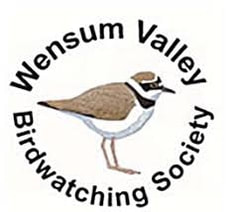|
Speaker: Matt Eade Reporter: Sue Gale Matt Eade works for Naturetrek and manages tours to Shetland for that company, so he was keen to convince us that it is a splendid place to go birding. And I can vouch for the fact that he is dead right, having been a number of times and intending to go again. Shetland is the most Northerly archipelago in the British Isles – by some distance, and is at a similar latitude to Oslo, so it has a different range of common birds from ours down here in Norfolk. You won’t find Robins and Blue Tits all over the place, but you might easily encounter Eider ducks, Black Guillemots or Red-throated Divers. These are all breeding birds, so even the diver is looking very different from those we see off-shore here in the winter. There are not many birds of prey – there isn’t a lot of prey!- but you can see Merlin and Kestrel and a few Sparrowhawks. You will, however, see Curlew displaying, Whimbrel breeding on high ground and Whooper Swans all year. A special bird many want to see is the Shetland Wren. It’s only a separate race, but its larger than ours, darker with a sturdier bill and quite a different song.
Starting in the South at Sumburgh Head, Matt introduced us to the birds and cetaceans of 5 areas of Shetland. Most people go to see the Puffins, that nest in numbers on the sloping cliffs of the Head, but look out also for Arctic Terns and several Skua species. Matt’s favourite is the elegant Long-tailed Skua, but this is also the most rare. You are more likely to be entertained by Arctic Skuas or Bonxies (Great Skua) as they hassle and dive-bomb other birds to steal their prey. Sumburgh Head is also a great place to look out for Orcas, Dolphins and even recently Humpback Whales. The tiny island of Mousa provides perhaps Matt’s favourite spectacle. It houses one of the most complete brochs in Shetland, which in turn provides crevices for nesting Storm Petrels. In their thousands! Well, 400 pairs in the broch itself, but up to 10000 in the island as a whole, nesting in the dry-stone walls. By day you might hear them calling from inside the walls, but it is at night when the hunters of the pair return to feed their partners and swap over sitting duties. This is all done under cover of darkness for safety reasons, but it is possible to visit the island and take the short walk to the broch at midnight, and witness the hundreds of birds wheeling around inside the broch like bats. If you are lucky, they may land briefly in front of you (one of our members had one land on her shoe!) before they disappear into the walls. Noss is an island close to the capital, Lerwick, and boat trips around the enormous high cliffs of the headland are frequent in the nesting season, as these cliffs house a huge sea-bird colony. There are Gannets, Razorbills, Guillemots, Kittiwakes and Cormorants, and if the weather is right for a close approach they are almost within touching reach! The island is also excellent for orchids, for those who venture there on land. Further North is the island of Fetlar. It is fairly remote and sparsely populated so an excellent area for breeding birds. Breeding Redshanks are plentiful and offer really intimate views, and in early morning the sky can be full of Snipe making their characteristic drumming sound. One of the star birds is the Red-necked Phalarope, scarce even here on Fetlar, but you can find it swimming along the shore-line. (When I went we were shown them at an inland nesting site.) These remarkable small waders spend their winter thousands of miles away off the Pacific coast of America. Bur don’t forget the cetaceans from Fetlar. When catching the ferries you are likely to encounter Harbour Porpoises, although you won’t see much more than a fin! You might be lucky enough to see White-sided Dolphins and even the rarer Risso’s Dolphin. Its also a good spot for Minke Whales and Orcas. (Perhaps the fact that Matt has still not seen an Orca in the UK does point up the fact that these are but no means guaranteed!) Lastly Matt took us to Unst, the most Northerly tip of Shetland. It can be pretty wild up at Hermaness RSPB reserve, where the Bonxies nest. Also pretty dangerous if you forget your hat and stray too close to a nest. The cliffs here are 600ft high, and from them you can see the vast Gannet colonies on the rocky islets offshore, and marvel at the huge numbers swirling below you. Also, around 25000 Puffins nest on the tops of the cliffs. With a few words about the islands in general to finish, Matt mentioned the Grey and Common seals that can be seen on the coast, and the Otters that are frequent and often seen around ferry ports. There are 4 species of Orchid to entertain the botanists, not to mention some tiny Shetland rare plants like the Shetland Mouse-ear and the Moonwort. Plus, some rare birds show up on migration from time to time, like the Bee-eaters, Rose-coloured Starlings and Red-backed Shrikes of recent years. Matt ended with a beautiful sunset view, and left many of us itching to get to Shetland again. Many thanks to Matt for an enjoyable talk illustrated with beautiful photographs.
0 Comments
Leave a Reply. |
Please feel free to read through our reports from our monthly indoor / online meetings. Archives
May 2024
Categories |

 RSS Feed
RSS Feed
